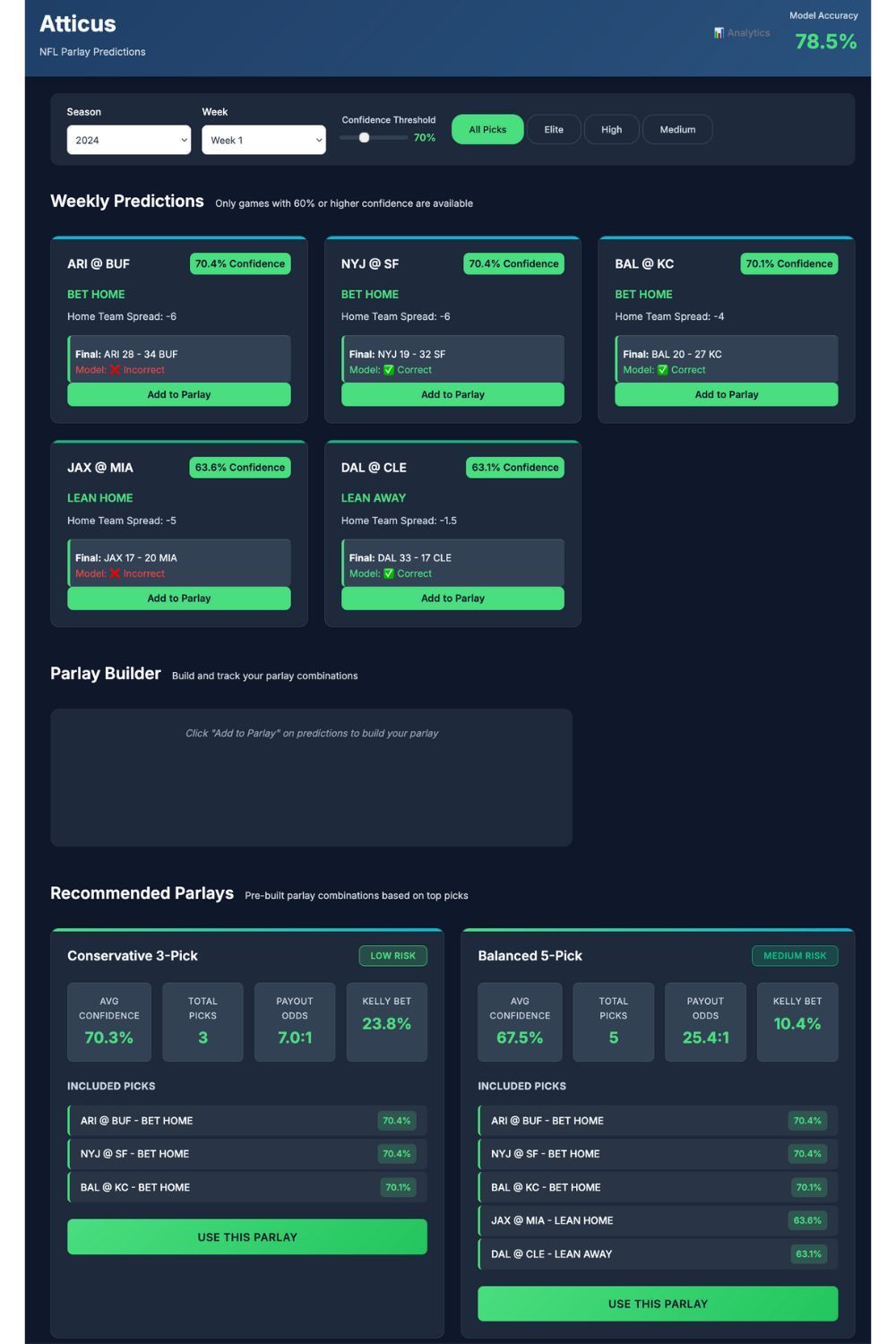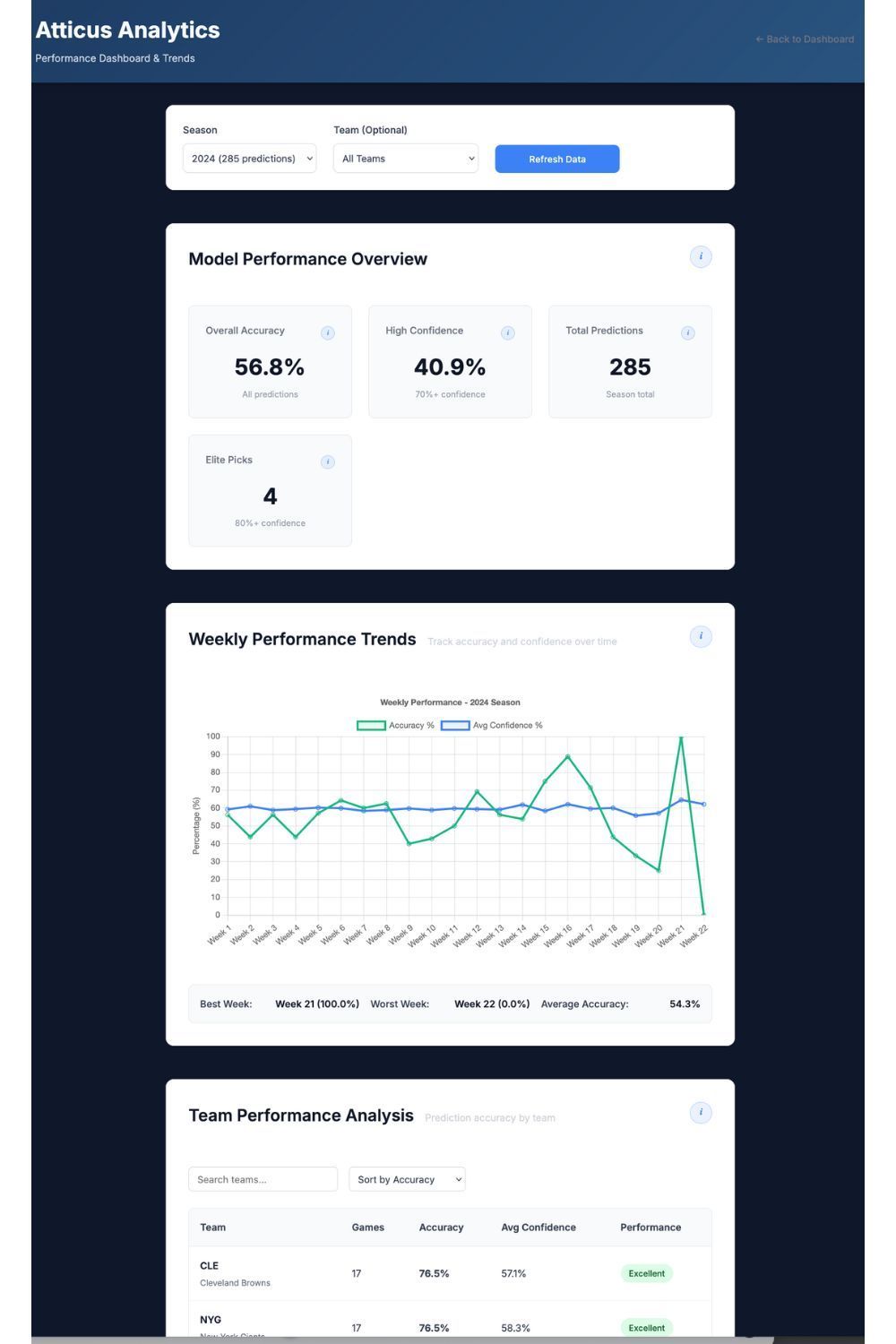Case Study: Why I Built a Betting AI App to Solve Marketing's AI Problem
The Challenge Every CMO Faces
"Should we invest in AI?" It's the question keeping marketing leaders awake at night. Everyone's talking about AI transformation, but most CMOs struggle with a fundamental problem: Where do you start when the stakes are real money and real results?
After helping Fortune 500 companies implement AI across global marketing operations, I decided to test my own framework in the highest-stakes environment I could find: sports betting, where every prediction costs real money and results are measured in dollars, not vanity metrics.


Why Sports Betting Is the Perfect AI Training Ground
When building AI for marketing, you need three critical elements that most "AI pilots" lack:
1. Rich Historical Data
My sports model analyzed 5,418 games across 20 NFL seasons—equivalent to decades of customer interaction data. Most marketing AI fails because companies try to build models on months of data, not years.
Marketing Parallel: Your CRM has years of customer behavior data, campaign performance, and conversion patterns. The question isn't whether you have enough data—it's whether you're using it strategically.
2. Real-Time Decision Making
NFL lines move constantly based on new information. My system processes fresh data daily and updates predictions accordingly—just like marketing campaigns need to adapt to changing customer behavior and market conditions.
Marketing Parallel: Customer intent signals, competitor actions, and market dynamics change daily. Static campaigns lose money; adaptive ones find opportunities.
3. Clear Success Metrics
In betting, success is binary: you win money or lose money. No "engagement lift" or "brand awareness improvement"—just hard ROI.
Marketing Parallel: The best marketing AI initiatives focus on measurable business outcomes: customer lifetime value, acquisition cost, or revenue attribution.
The Technical Framework (And Why It Matters for Marketing)
Model Selection Process
I tested multiple algorithms—logistic regression, random forest, gradient boosting—before optimizing for against-the-spread accuracy. The key insight: The most sophisticated model isn't always the best business model.
CMO Takeaway: Start with simpler models that deliver consistent results rather than complex systems that promise everything but deliver confusion.
Real-Time Data Pipeline
The system automatically ingests new game data, processes it through the model, and updates predictions weekly. No manual intervention required.
Marketing Application: Imagine your attribution model automatically updating as new customer touchpoints emerge, or your media allocation adjusting based on real-time performance data.
Confidence Scoring System
Every prediction includes a confidence level (1-10 scale) that guides bet sizing—high confidence gets larger investments, lower confidence gets smaller tests.
Marketing Translation: Instead of treating all campaigns equally, AI-driven confidence scoring helps you invest more heavily in high-probability opportunities while limiting exposure to uncertain initiatives.
The Results: What Actually Worked
Technical Performance
- 55%+ accuracy against Vegas spreads (beating market efficiency)
- Automated parlay recommendations optimizing risk/reward combinations
- Real-time deployment on Digital Ocean with zero downtime during game weekends
Business Insights
The most valuable discovery wasn't about sports—it was about AI implementation strategy:
- Start with clear success metrics before building anything
- Use historical data to validate models before deploying real-time systems
- Build confidence scoring into every prediction to guide investment decisions
- Automate the entire pipeline to eliminate human error and delay
How This Translates to Marketing AI Investment
For Customer Lifetime Value Prediction
Instead of guessing which customers will convert, build models that predict purchase probability with confidence scores. Invest more acquisition budget on high-confidence prospects, less on uncertain ones.
For Attribution Modeling
Rather than relying on last-click attribution, create models that analyze the full customer journey and assign probabilistic credit to each touchpoint—just like analyzing which data points most accurately predict game outcomes.
For Media Optimization
Build systems that automatically reallocate spend based on real-time performance, similar to how the betting model adjusts predictions based on new information.
For Personalization Engines
Use confidence scoring to determine which customers get highly personalized experiences (high confidence) versus standard messaging (lower confidence).
The Framework for CMO AI Success
Based on this project, here's my recommended approach for marketing AI initiatives:
Phase 1: Foundation (Months 1-2)
- Audit existing data for AI-ready datasets
- Define clear success metrics tied to business outcomes
- Start with historical analysis to validate model concepts
Phase 2: Pilot Development (Months 3-4)
- Build simple models first (like logistic regression before neural networks)
- Test on historical data before deploying to live campaigns
- Create confidence scoring for all predictions
Phase 3: Production Deployment (Months 5-6)
- Automate data pipelines to eliminate manual processes
- Implement real-time updates for dynamic optimization
- Monitor performance continuously with clear success metrics
Phase 4: Scale and Optimize (Months 7+)
- Expand successful models to additional use cases
- Iterate based on results rather than theoretical improvements
- Build organizational AI literacy around proven frameworks
Why This Matters for Your AI Strategy
Most marketing AI initiatives fail because they start with the technology instead of the business problem. By testing my framework in an environment where every decision has immediate financial consequences, I validated that the same principles driving successful sports predictions can drive marketing ROI:
- Data-driven decision making beats intuition
- Confidence scoring guides smart investment allocation
- Real-time adaptation captures opportunities competitors miss
- Clear success metrics eliminate ambiguity about what works
The Bottom Line
Building AI for sports betting taught me that successful AI implementation isn't about having the fanciest algorithms—it's about applying proven frameworks to clear business problems with measurable outcomes.
For CMOs wondering where to invest AI resources: start with use cases that have rich historical data, clear success metrics, and direct business impact. Whether you're predicting customer behavior or game outcomes, the framework remains the same.
The question isn't whether AI will transform marketing. The question is whether you'll implement it strategically or get left behind by competitors who do.
Want to see the technical implementation details or discuss how this framework applies to your marketing challenges? Connect with me at william@williamflaiz.com.
Should my company abandon traditional analytics in favor of AI predictions?
Not necessarily—the decision depends on your data maturity and business objectives. Start by evaluating your current analytics' actual business impact and data quality. If your teams extract actionable insights from existing dashboards and you have clean historical data with clear outcomes, you're ready for predictive AI. However, if your current analytics lack adoption or clear ROI measurement, fix those fundamentals first. Consider a hybrid approach: supplement existing analytics with AI-powered confidence scoring for high-impact decisions like media allocation or customer acquisition targeting.
How can we prepare our marketing data for AI implementation regardless of which approach we choose?
Data preparation is crucial for AI success. Start with these foundational steps: conduct a data audit assessing completeness, accuracy, and business outcome correlation across your marketing systems. Establish data governance with clear standards for data entry and quality control. Implement systematic cleansing to remove duplicates and standardize formats across platforms. Create unified customer identifiers connecting touchpoints and campaigns. Document data lineage tracking sources and transformations. Most importantly, start with your cleanest, highest-quality dataset for initial AI implementation rather than trying to fix everything at once.
What skills should our marketing team develop for AI-driven decision making?
Your teams need a blend of analytical, technical, and strategic capabilities. Develop data literacy fundamentals including understanding confidence intervals, statistical significance, and model limitations. Build comfort with interpreting AI-generated insights and recommendations rather than just accepting them blindly. Cultivate critical thinking to question automated recommendations and validate results against business knowledge. Focus on outcome measurement, moving beyond traditional metrics to business impact assessment. Most importantly, maintain the balance between human insight and technological capability—AI provides predictions, but humans provide context and strategic direction.
Author: William Flaiz










